Moana: A Disney Princess For The 21st Century
Throughout Disney’s reign, its movies have illustrated society’s standards of each decade; portraying its protagonists to act like ‘women’: Polite, prim and proper.
Yet, Disney attempts to escape the out-dated stereotypes that were promoted in its films, with more exotic characters such as Pocahontas (1995) and Mulan (1998). Despite the evolving views of beauty due to these diverse characters, Disney wasn’t successful in showing the cultures that influenced them. Nonetheless, in 2016, Moana was introduced, breaking almost every stereotype that was held.
Throughout this piece, I will explore differences in production and characterisation between Mulan, Pocahontas and Moana for the purpose of making entertainment that is culturally accurate.
The Album’s Success
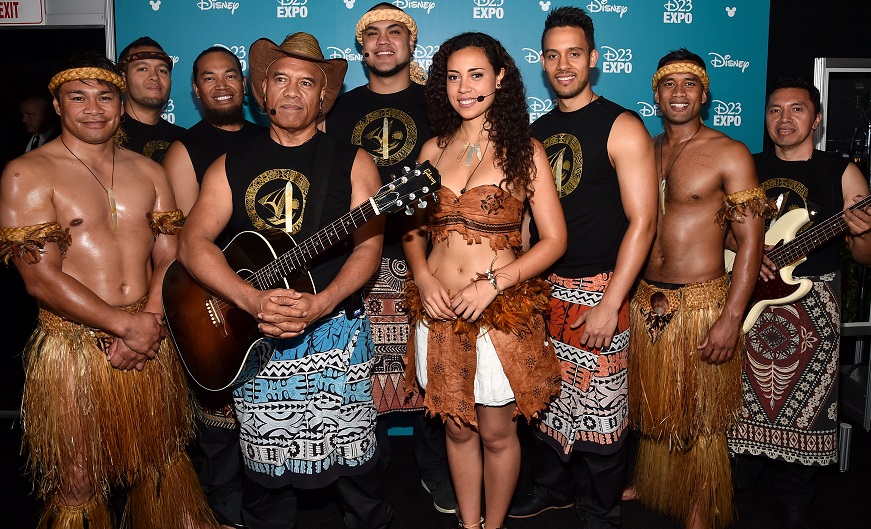
With the début screening of Moana, the world instantly fell in love with the original, authentic and addictive soundtrack; so much so that it first entered the Billboard 200 at the 16th spot and even made it to number 2. From the moment Moana is chosen to carry out her adventure, we hear a simple, angelic song — ‘An Innocent Warrior’ sung by Vai Mahina (from band Te Vaka). This elegant song, like others ‘We Know The Way’ and ‘Tulou Tagaloa’, was written by the multi-talented founder of the Contemporary Polynesian band Te Vaka, Opetaia Foa’i, in one of his native tongues, Tokelauan. Thanks to this partnership, we experience the hidden languages of the Polynesian islands.
Ou mata e matagi
Ou loto mamaina toa
Manatu atu
Taku pelepeleYour eyes so full of wonder
Your heart, an innocent warrior
My dearest one
There’s a task for you
The first four Tokelauan lines in ‘An Innocent Warrior’, which translates the impactful features of Moana as a child, while simultaneously introducing a principal aspect of the movie (her role in returning the Heart of Te Fiti). Although not clear to the majority of the world, this song was evidently made for this marvellous scene — and it fits perfectly.
It hasn’t always been this way. Disney wasn’t successful in presenting the Chinese culture through music, considering that, apart from the recurring use of stereotypical Chinese flutes and stringed instruments, the majority of songs in Mulan consist of generic ‘operatic pop’, much like Pocahontas.
As for the inclusion of Mandarin, spoken by the legendary woman warrior Hua Mulan… there wasn’t any. In fact, it seems that the furthest Disney went to making this film culturally accurate was casting Chinese-American actress Ming Na Wen to voice Mulan — which is, at best, tokenism.
How about the mother-tongue of Pocahontas? Nothing about Pocahontas’ native language was included in the film, not even in the soundtrack. This could be due to the slow extinction of the Native-American language varieties. However, I don’t think this justifies the exclusion since the Polynesian varieties are also rarely utilised nowadays, yet Moana’s inclusion has drawn attention to and popularised its languages, which will ultimately avoid their elimination in the future. Maybe if Disney had included Native-American languages, they wouldn’t be on the brink of extinction now.
Moana Redefines Beauty
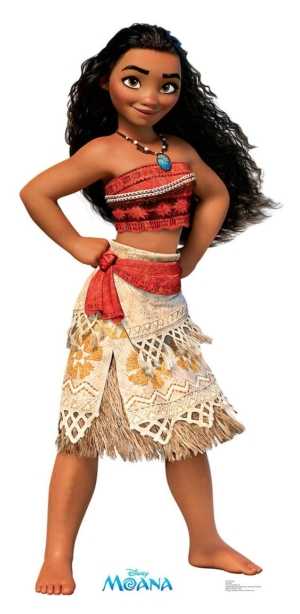
In terms of their physical appearance, Disney has presented its princesses with the most evident features of the location in which the films are set — even Moana. For instance, Mulan has the cliché Chinese image with straight, jet-black hair and almond eyes, which aren’t perceived to be uncommon in China, as well as Pocahontas’ appearance based upon the Native American voice actress Irene Bedard. Rather than making these characters entirely unique in contrast to their neighbours to highlight their unearthly beauty, Disney has instead chosen to depict an average illustration of them. One could say they are shown as ‘the girl next door’, not having an extraordinary appearance yet still being classed as pretty enough to be a princess.
Moreover, Jasmine from Aladdin (the first ethnic princess to be introduced in 1992) has commonplace Indian physical features such as thick, dark eyebrows and hair. This introduction initiated a new perspective on beauty, with the more open-minded opinions on a variety of physical attributes that originate from all over the globe. Compared with the original Disney princesses, such as Cinderella, the development of the representation of women in Disney is clear. Despite this development, all three of these characters were drawn with the western ideals of women in place of accurate representations of these different women in their own home countries.
Although Moana does conform, by having the typical dark, curly hair and darker skin tone of her home island, she rejects the classic Disney princess body type. Rather than having a thin body and an astonishingly miniscule waist, Moana has a more realistic body and is an adventurous and athletic character. This is clear as she strides up Motunui (meaning ‘big mountain’ in Maori) and zip-lines her way back down using only a leaf and a tree branch … the natural way. It could be said that the island itself has shaped not only her attractive personality, but also her beautiful body.
Moana has influenced millions of children (and adults) by proving that you can be a popular and engaging character without conforming to society’s harsh beauty standards or stereotypical gendered behaviour.
The History of Voyaging
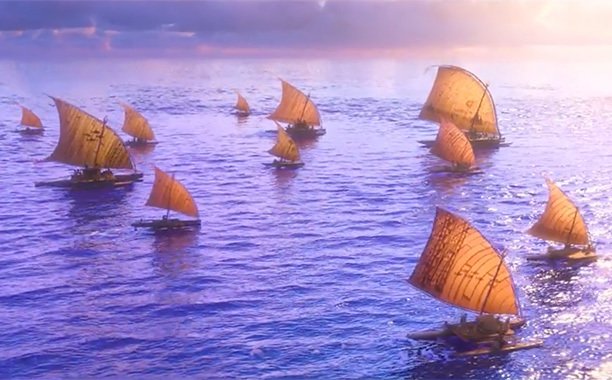
The plot behind Moana is based on The Long Pause, a gap in time when the islands of Central and East Polynesia were not settled until approximately 1000 years ago. After landing in Fiji, Samoa and Tonga, Polynesians took a break from voyaging for almost 2,000 years. Disney cleverly created Moana to build a fictional reason why the greatest navigators stopped at that time. In this case, the chief (Tui) prohibits voyaging as a consequence of losing his friend in troubled waters in his youth.
Likewise to the story of The Hunchback of Notre Dame based on Victor Hugo’s novel– with the theme of discrimination of minority groups like Esmeralda’s Romani heritage and Quasimodo’s deformities– this story is not entirely fiction. In fact, Disney’s team spent three weeks visiting Samoa, Tahiti and others gathering information about how the culture and legends of Polynesian countries intertwine. Polynesian culture is also expressed in the minor characters, through the Samoan tattoos (pe’a) on both Maui and Tui, in the traditional Samoan bark clothes known as siapo, and the classic Samoan round houses, or fale.
Final Thoughts
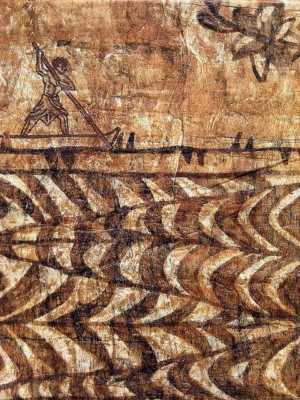
Moana begins with Polynesian myths and legends and finishes with the credits rolling over pieces of tapa. Ultimately, Moana is filled with charming Polynesian culture from start to finish. I believe that the success of Moana is the consequence of Disney’s great efforts to immerse itself into the culture of Pacific Islanders, comparing to their other ventures where there is a clear lack of effort. Disney should be proud of “Moana” and the influences it has had (and will have) on society. From refusing social beauty ideals to teaching, enriching and inspiring the world of a distinct and wonderful culture.
What do you think? Leave a comment.
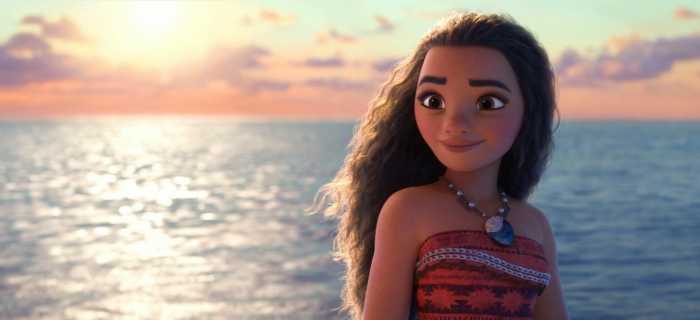
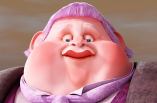
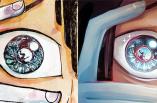
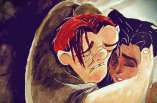

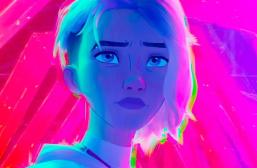
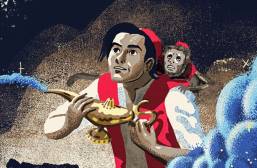
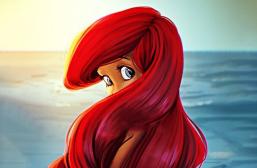
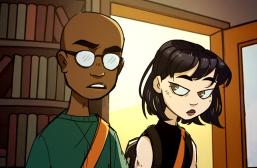
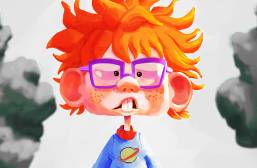
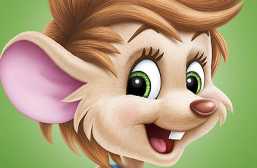
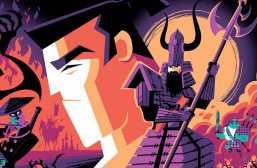
Great article, I thought Moana was fun but had a lot of issues. My biggest issue was the scene with her grandmother where she breaks down and says that she is not capable. You’re right she literally succeeded in everything that she did but they just shoehorned in this “emotional” scene without her ever actually failing and justifying her self doubt.
Very well constructed analysis of Moana with a great sense of clarity. Thanks for writing it.
Is she really a princess?
I think people are getting a little to hung up on technicalities here, it is very obvious that the Disney princess franchise is just a marketing gimic it does not necessarily mean that all the ladies in the line up have to be a “princess” so people saying Elsa cant be a dinsey princess because she is queen is irrelevant. The rule states you must be born royal or marry royal, and Elsa was a princess till her coronation, also if you are going with that mindset then Belle shouldn’t be a disney princess either as she was not born royal and we are only left with the presumption that she married the beast as there was not actually a wedding in the film. my point is they obviously don’t actually have to be a “princess” in the movie to he considered a Disney princess as that formality was also glossed over for both Pochohontas and Mulan.
Esmeralda is my fave Disney “princess”.
All the Disney Princesses appear in Wreck-It Ralph 2, including Moana and the ones from Frozen.
Moana isn’t a princess. She becomes Chief at the end and is thus more like a Queen.
Moana shouldn’t become a disney princess. She should be the outlier that throws shade at the princesses.
Disney is going through a long phase right now. They are constitutionally unable to challenge female characters. The company is deeply afraid of whatever backlash they imagine would happen if they ever show a woman fail at anything.
Ironically, this sets up a REALLY unrealistic set of expectations which in no way supports the Feminist agenda they have adopted. Girls and boys need to understand failure isn’t the end of the world and it’s a critical part of becoming proficient. It’s important for girls as well as boys to see that people have to put in hard work to become great at what they do. For Disney right now, this is impossible. Girls must always be portrayed as capable and competent at all times. They are never allowed to really struggle. This means they can never have a satisfying arc either.
An interesting discussion that recognises the intent of Disney in its work.
I do agree with Iraida above that there are some inherent issues in Disney’s presentation of women, but I will also note that fundamentally it is a studio focused on a children demographic so will always be more conservative than in the progression of changing social norms than even their other adult films.
I think another reason the soundtrack was so popular was the collaboration with Lin-Manuel Miranda. Disney really seemed to make an effort to immerse itself in the culture for this film, like Pixar did with Coco.
Why does Disney have snow white sleeping beauty and Cinderella what type of lesson is to your kids it’s like if woman are weak when it comes to these princesses not a good role model for kids these days to follow we need to learn to be independent not dependent on someone else
I am so pissed that Elena is a Disney Princess and Moana isn’t considered one by many… WHY?? What the hell was the point of her then?? I thought the goal was to add some more color and culture to the DP lineup! And yeah, Elena is color, but she doesn’t have a theatrical feature film, and she’s exclusively a kids character! The other DPs were all presented in a way that’s entertaining to both kids and adults so adults can love them too. Who the hell is Elena? I don’t even know this bitch! I hope they change their mind about this one day. Moana absolutely belongs in the lineup. If they’re gunna exclude her because she’s an “anti-princess”, then they might as well take out Pocahontas since she’s also just a daughter of a chief. They can take out Mulan who’s not even a princess. They can take out Merida because her personality is more like Moana in the sense that she’s a rebellious “princess”. I don’t understand what makes Moana so different that they excluded her.
I think that Moana should definitely be a Disney princess.
I’m pissed about it, too! Elena just inherited everything. Not fair.
My only argument against her being a “Disney Princess” is all the stupid redesigns that franchise puts the characters through to make them “prettier” *gags, they look like clowns with wayyyy too much glitter, now. THANKS, marketing teams!
I saw it this weekend and was shocked to be as moved as I was by the story telling and Moana herself.
I absolutely loved this movie. I’m white, of Dutch extraction, but I grew up in Aotearoa, and learned Te Reo and tikanga fro an early age, and played with Maori, Tongan, and Samoan friends. I live in Australia now (where I was born), and found the temporary immersion in the culture and language of the movie (and of course the voice of Tem Morrison) such a welcome change from my experience here in Australia. I’ve read a lot of finger pointing about the movies supposed cultural insensitivity, and disagree with all of it- it’s a celebration of Pacifica, and I’m always down with one of those. I wouldn’t have chosen Dwayne to portray Maui, but I can’t fault his performance at all- he captured his mischevious nature perfectly.
I have no cultural connection to the south pacific, but though the film was brilliant.
My daughter loved moana even more than frozen(a big accomplishment)
Wonderful film with stunning animation and catchy, joyous songs.
I feel Disney tries to play too safe with their characters for commercial purposes. When compared with older classic films, the character almost never faces shame, loneliness, resentment and defeat. She never faces negative emotions like this, only frustration when things don’t work out (which eventually is solved with the help of others).
This is the perfect character to sell to the audiences Disney have been hawking over for the past decade or so – the special snowflakes of this society where people are vulnerable and need to hear “you are beautiful and perfect!”. People just seem to not want to change their faults, but rather celebrate only their good sides. While knowing your pros are great, knowing your cons and reflecting on that is equally important.
Lion King and Star Wars do just that, but Moana doesn’t and this is the best item to sell to those who want quick satisfaction and self-confidence. You’ve got to spill blood and sweat to be Simba and Luke Skywalker, but not if you’re Moana who’s always succeeding! It’s the same psychology of getting addicted to social media. As you become more exposed to the good, luxurious things, you start believing you have it when you actually don’t.
Thank you for summing up exactly how I felt about this movie and the character, but couldn’t verbalize myself. Shared with friends!
Imo, Moana is never about Moana the individual. The entire movie is about Moana and her island she is supposed to lead. From the very beginning the movie makes clear Moana is pretty much sure of who she is. The movie is about finding herself in the context of her community. That is why the ocean takes her everywhere, that’s why she needs the help of Maui, why she needs that push from the spirit of her grandmother. Those all are part of her cultural inheritance. The community is facing problems (encroaching modernity/environmental issues) and Moana is their chosen individual to fix them. The Lion King was all about Simba finding himself. Moana is about reconciling cultural and communal responsibilities with your individual character and using them as a source of strength.
I really love the way you put this! The goal itself is quite inspirational; I feel that finding oneself (your own interests, happiness, strengths and weaknesses) isn’t enough. Instead, finding yourself and your place within your community and contributing to it for the better, no matter how big or small the significance or its impact, is the best thing. I wish to follow in that path 🙂
I found this movie to be bough bland and boring. I don’t remember the feeling I had wile watching it. I was always aware that everything in the movie was a creative choice by the people behind it. Probably why I couldn’t enjoy it at all. A good movie, in my opinion, should be a peek into another world; the feeling that the world extends outside of the frames we are shown. I didn’t get that feeling. It was all neat and tidy, but lacked soul. It felt like they wanted to make a movie; not tell a story. I don’t know if that makes any sense. But that’s just how I feel.
I spent the first four years of my life in Samoa, and although I don’t remember much, my family’s stories and photos, and even smatterings of Samoan language, have kept that part of my life alive. I’m looking forward to watch this movie. Thanks for reminding me about it!
She’s a good example for young girls.
A really great and interesting analysis of the ways that Disney have been attempting to create characters that represent a variety of different cultures accurately.
I hope that they take the success of Moana and build upon it.
I loved this movie mainly because of the directors, Ron Clements and John Musker, whose filmography within Disney never fails to impress me. They created my favourite Disney film – “Treasure Planet” and after watching “Moana”, I was left with a feeling of euphoria similar to when I had seen my favourite Disney film as a wide-eyed, adventure-obsessed 5 year old. In saying all that, however, I too felt like the plot and character developments were a bit iffy.
Moana and her family are the only ones who wear red or have red in their clothing and even on their crowns. Why? Because in Polynesian culture, the colour red is associated with royalty.
I would love to see Moana become a princess. Personally the characters that don’t fit the typical princess stereotype are my favorites and I think deserve more recognition! Don’t get me wrong, I love the classic Disney princess films, but I also love the more independent and strong-willed characters.
A good essay. I enjoyed reading this from the perspective of years of watching Disney movies with my children.
I’m a fan of Moana, especially the fact that her waist isn’t smaller than her head and did enjoy your piece. I do have one little nitpick, though.
‘…Jasmine from Aladdin (the first ethnic princess to be introduced in 1992) has commonplace Indian physical features such as thick, dark eyebrows and hair.’
Jasmine isn’t Indian. She, like all of Alaadin’s characters, is intended to Middle-Eastern.
Great article! Moana is one of my favourites – it’s nice to see an ethnic princess in a movie filled with culture.
Moana is my best childhood story <3 Totally love it
The song in Moana “How far I’ll go” impacted greatly on me. I love this movie!
I know this was written 3 years ago but what a great article. I definitely agree with the point you made about Disney not portraying the cultures in Pocahontas and Mulan properly. As a Samoan, I was filled with so much excitement and joy when I heard they were going to create another Disney Princess with a Polynesian back ground. ‘Moana’ was such an amazing film that the Polynesian cultures were getting so much recognition and praise that made my people so happy. The only things I wasn’t happy about were the VAs and the lack of other Polynesian cultures being portrayed in the film. I felt like the voice acting sounded too American for my taste (this is only my opinion) and just didn’t sound like how I imagined it would when I first watched it and as I am happy that my Samoan culture was portrayed throughout the film and being in part of the song ‘We Know The Way’ in the first verse of “Tatou o tagata folau…”, it still would have been nice to see other Polynesian cultures like Tongan and Fijian displayed in the film. But overall, I genuinely enjoyed the film and reading this article, and honestly cannot wait for what Disney has in store for us next.
Even though it’s been quite a while since I last saw Moana in theaters, or at all for that matter, I still have fond memories of hearing the many different songs from the OST. Just goes to show how much effort was put into making the film memorable and unique.
In spite of its potential flaws, I’d say it was a good film overall. Definitely worth building off of these solid foundations to create even better films of this type in the future!
This article analyzes how Disney creates different characters and tries to present various cultures through movies.